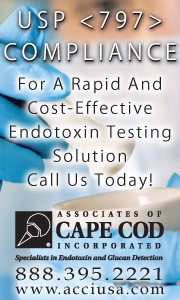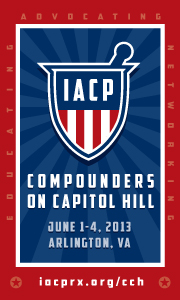|
|
|
 |
| |
 Letter from the Editor Letter from the Editor |
|
Editorial: Current Good Manufacturing Practices (cGMP) Regulations, Part 13
This week, we complete our summary review of Good Manufacturing Practices (GMPs) by looking at the remainder of Subpart J: Records and Reports and also Subpart K: Returned and Salvaged Drug Products. The following are the subpart sections and a brief description of their content.
Subpart J-Records and Reports
Sec. 211.188 Batch Production and Control Records
This is the working form of the master production and control records and must be prepared for each batch of drug product produced and shall include complete information on the production and control of each batch. These records include:
- An accurate reproduction of the appropriate master production or control record, checked for accuracy, dated, and signed
- Documentation that each significant step in the manufacture, processing, packing, or holding was accomplished and includes:
- Dates
- Identity of individual major equipment and lines used
- Specific identification of each batch of component or in-process material used
- Weights and measures
- In-process and laboratory control results
- Inspection results of the packaging and labeling area before and after use
- Statement of actual yield and statement of the percentage of theoretical yield at appropriate steps in processing
- Complete labeling control records, including specimens or copies
- Description of drug product containers and closures
- Any sampling performed
- Identification of the individuals performing and directly supervising or checking each significant step
- Results of investigations and/or examinations made
Sec. 211.192 Production Record Review
All production and records shall be reviewed and approved by the quality-control unit for compliance with all established procedures before a batch is released or distributed. Any unexplained discrepancy or failure of a batch to meet any of its specifications shall be thoroughly investigated and documented.
Sec. 211.194 Laboratory Records
Laboratory records shall include complete data derived from all tests required to assure compliance, including examinations and assays, as detailed in this section.
Sec 211.196 Distribution Records
Distribution records shall include the name and strength of the product and description of the dosage form, name and address of the consignee, date and quantity shipped, and lot or control numbers.
Sec. 211.198 Complaint Files
There shall be written procedures that describe the handling of all written and oral complaints regarding a drug product, and these shall be followed and documented. General information included, as available, will contain the name and strength of the drug product, lot number, name of complainant, nature of the complaint, and the reply to the complainant.
Subpart K-Returned and Salvaged Products
Sec. 211.204 Returned Drug Products
Returned drug products shall be identified as such and held. If there are any doubts on the safety, identity, strength, quality, or purity of the drug product, it shall be destroyed unless examination, testing, or other investigations prove the drug product meets appropriate standards of safety, identity, strength, quality, or purity. A drug product may be reprocessed if it meets the appropriate standards, specifications, and characteristics. Complete documentation is required.
Sec. 211.208 Drug Product Salvaging
Drug products that have been subjected to improper storage conditions, including extremes in temperature, humidity, smoke, fumes, pressure, age, or radiation due to natural disasters, fires, accidents, or equipment failures shall not be salvaged and returned to the marketplace. Salvaging may be conducted only if there is:
- Evidence from laboratory tests and assays that the drug product meets all applicable standards of identity, strength, quality, and purity, and
- Evidence from inspection of the premises that the drug products and their packaging were not subjected to improper storage conditions as a result of the disaster or accident
Summary
This completes this series on a summary presentation of the GMP. After completion of the new series on 483 observations that begins next week, we will come back to these GMPs and compare them with Good Compounding Practices that are presented in USP Chapters <795>, <797>, <1163>, and others.
Loyd V. Allen, Jr., PhD, RPh
Editor-in-Chief
International Journal of Pharmaceutical Compounding
Remington: The Science and Practice of Pharmacy
|
| |
| News |
|
SPCC 2013 Results
The MEDISCA Group of Companies is proud to announce that the Third Annual National Student Pharmacist Compounding Competition held March 22-24, 2013 in Gainesville, Florida was a great success! See the following for details on standings of overall and per category winners.
Overall Winners of the National SPCC 2013:
1st Place: State University of New York at Buffalo
2nd Place: The University of Findlay College of Pharmacy
3rd Place: University of Connecticut School of Pharmacy
4th Place: South College School of Pharmacy
5th Place: University of Oklahoma - Tulsa Campus
Formulation Rankings:
1st Place: State University of New York at Buffalo
2nd Place: University of Connecticut School of Pharmacy
3rd Place: Washington State University
Regulatory Rankings:
1st Place: The University of Findlay College of Pharmacy
2nd Place: University of Connecticut School of Pharmacy
3rd Place: State University of New York at Buffalo
Quality Rankings:
1st Place: The University of Findlay College of Pharmacy
2nd Place: State University of New York at Buffalo
3rd Place: University of Connecticut School of Pharmacy
Clinical Rankings:
1st Place: University of Missouri-Kansas City
2nd Place: University of Florida College of Pharmacy
3rd Place: St. Louis College of Pharmacy
Oncology Drug Shortages
A survey was reported in AJHP on shortages of oncology drugs in the U.S. that occurred in the first half of 2011. The oncology pharmacists surveyed reported that these shortages led to delays in chemotherapy, changes in therapy, complicated the conduct of clinical research, increased the risks of medication errors and adverse outcomes, and increased medication costs. [McBride A, Holle LM, Westendorf C et al. National survey on the effect of oncology drug shortages on cancer care. Am J Health Syst Pharm 2013; 70(7): 609—617.]
Germany Deciding on Price Cuts on Big-selling Drugs
Germany's pricing watchdog is extending its spread to cover reviews into the cost-effectiveness of a number of blockbuster products. Germany's Federal Joint Committee (G-BA) issued a statement saying it is looking at drugs of "economic importance" with a high volume of sales in a number of therapeutic areas; it is being carried out using the controversial AMNOG pricing structure which came into force in January 2011, and the move represents the first time it has appraised already-marketed drugs.
http://www.pharmatimes.com/Article/13-04-19/Germany_looks_at_price_cuts_on_big-selling_drugs.aspx
Maine Considering Tighter Pharmacy Regulations
State lawmakers in more than 10 states have proposed tighter restrictions, according to the National Conference of State Legislatures. Examples of those changes that Maine is considering are as follows: (1) all compounding pharmacies that fill prescriptions for those who live in Maine must be licensed by Maine, (2) it would create a new type of license for compounding pharmacies, (3) removes two pharmacists from the state Board of Pharmacy and replaces them with a physician and a nurse, and (4) requires pharmacy board members to file an annual statement disclosing conflicts of interest. Also it would require the board to participate in a national data reporting system and institute a $25,000 fine for out-of-state pharmacies that fail to comply with Maine's rules.
http://www.pressherald.com/politics/tighter-pharmacy-regulation-sought_2013-04-22.html
Medicaid Benefits Not Uniform Under ACA
The benefits for Medicaid recipients already differ from state to state. In those states planning to expand the health program for the poor under the ACA, people on Medicaid who live next door to each other could pay different amounts to see a doctor and be entitled to different levels of care. ACA essentially creates two broad sets of Medicaid beneficiaries: those who qualify under the rules before the overhaul passed and those who are eligible through the law's expansion, most of whom will be adults. Under the new ACA, Medicaid benefits will not be more uniform.
http://www.cq.com/login?jumpto=%2Fdoc%2Fhbnews-4260402
South Africa Joins India in Closing Drug Patent Loophole
South Africa will be overhauling its intellectual property laws to improve access to cheaper medicines by making it harder for pharmaceutical firms to register and roll-over patents for drugs. This involves closing a loophole known as "ever-greening," whereby drug companies slightly modify an existing drug whose patent is about to expire and then claim it is a new drug, thereby extending its patent protection and their profits.
http://www.reuters.com/article/2013/04/22/us-safrica-medicines-idUSBRE93L0M420130422
India Drug Pricing Policy
The government in India has received responses from around 400 drug manufacturers so far regarding data on essential medicines as part of efforts to decide their prices under the new drug pricing policy.
http://articles.economictimes.indiatimes.com/2013-04-23/news/38763082_1_national-pharmaceutical-pricing-authority-drug-companies-nlem
Novartis Sued Alleging Kickbacks to Pharmacies
The U.S. government has filed a civil fraud lawsuit against Novartis accusing them of causing the Medicare and Medicaid programs to pay tens of millions of dollars in reimbursements based on fraudulent, kickback-tainted claims. The U.S. Attorney in Manhattan stated that since 2005, they have induced at least 20 pharmacies to switch thousands of kidney transplant patients to its immunosuppressant drug Myfortic from competitors' drugs, in exchange for kickbacks disguised as rebates and discounts. Novartis tried to conceal the scheme by omitting the agreements from rebate and discount contracts with pharmacies. For example, Novartis allegedly offered a Los Angeles pharmacist a "bonus" rebate of 5% of that pharmacist's annual Myfortic sales, or several hundred thousand dollars, to switch as many as 1,000 patients to Myfortic.
Novartis has been called "repeat offender," referring to a settlement of healthcare fraud charges based on kickbacks less than three years ago.
http://www.reuters.com/article/2013/04/24/us-novartis-fraud-lawsuit-idUSBRE93M1C920130424
|
| |
| IJPC Now on Facebook |
|
Become a fan of the IJPC Facebook page and share ideas, photos, and keep up to date with the latest compounding information - http://www.facebook.com/IJPCompounding
|
| |
| Did You Know ... |
|
�that it can take only a few minutes to confirm questions on a formulation�but may take years to resolve the effects of an inappropriately compounded preparation?
|
| |
| Tip of the Week |
|
Upon receiving an order for: Hydrochloric acid 10% solution, a clarification was requested:
Questions
1. Does this mean the final concentration of hydrochloric acid is 10%? OR
2. Does this mean to make a 10% solution of Hydrochloric acid NF, which is a 37.5% w/w solution with a resulting final HCL concentration of 3.75% w/w?
Answer
In this case, #1 is correct; the final concentration of hydrochloric acid is 10%. In fact, there is a Diluted Hydrochloric Acid NF solution that contains 10% w/v HCl. Note: Don't forget to use the specific gravity of HCl in your calculations, which is 1.18 g/cm3.
|
| |
| Looking Back |
|
If daisies are your
Favorite flower,
Keep pushin' up those
Miles-per-hour!
Burma Shave
|
| |
| PCAB Accreditations |
|
PCAB is proud to announce the accreditation of the following pharmacy:
IV Compound Center of Wisconsin, New Berlin, Wisconsin. Donald Koshak, RPh, IVCC2850@SBCGLOBAL.NET. Initial Accreditation for Sterile Compounding.
|
| |
| In Memory of George Malmberg |
|
George J. Malmberg, RPh, FACA, FACVP, co-founder and chief executive officer of Wedgewood Pharmacy, passed away on April 22, 2013 in Wilmington, Delaware following a brief illness. He was 64. With his wife and co-founder, Lucy Malmberg, RPh, FACA, FACVP, he transformed a New Jersey community pharmacy they purchased in 1981 into one of the largest specialized compounding pharmacies in the U.S., with more than 230 employees serving tens of thousands of prescribers and millions of people and animals.
|
|





